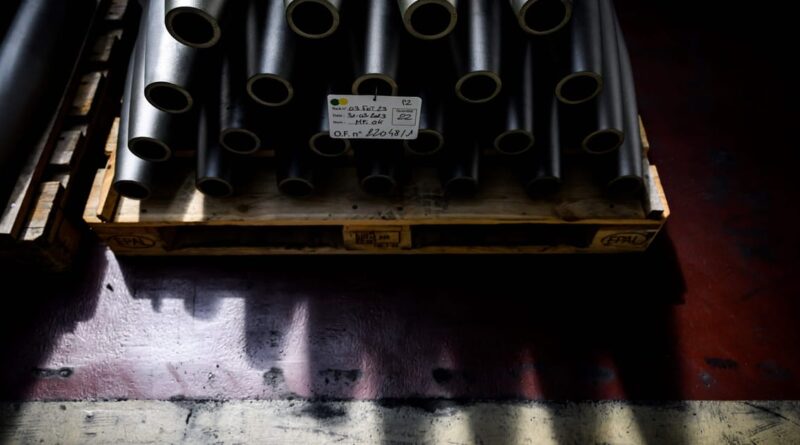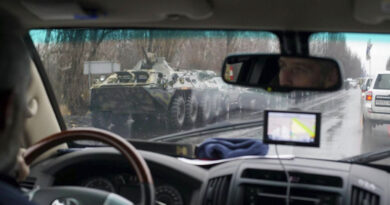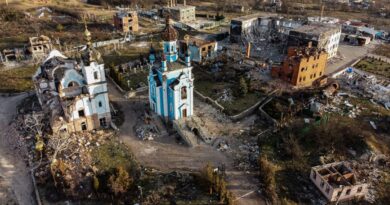Don’t trust the data: France insists it’s pulling its weight on arms to Ukraine
PARIS — The numbers showing that France is the military skinflint among European countries when it comes to donating weapons and ammunition to Ukraine don’t paint the full picture, French lawmakers argue in a report presented Wednesday.
The MPs want to “deconstruct what may have been said or written about France’s aid that would not live up to our ambitions,” Lionel Royer-Perreaut, a deputy from French President Emmanuel Macron’s Renaissance party and the report’s co-author, told reporters.
“Some have a vested interest in letting things flourish on social networks to destabilize the Western bloc, others because of intra-European competition,” he added when asked what’s driving criticism of France.
France and Ukraine did start on the wrong foot. In the war’s early days, Macron insisted Russian President Vladimir Putin should not be humiliated and suggested that Moscow deserved “security guarantees,” infuriating Kyiv, Baltic countries and Central European governments.
The French leader has since made amends by throwing his weight behind Ukraine’s EU and NATO accession bids — and sending long-range SCALP-EG cruise missiles even before the U.S. agreed to ship its own ATACMS missiles.
The parliament report, seen by POLITICO, comes as the French government committed this week, at the request of MPs, to refinance a special fund for Ukraine with €200 million after the initial €200 million cash pot was spent. The fund has helped finance deliveries of optical systems, Caesar self-propelled howitzers, ControlMaster 200 radars and 155mm ammunition.
“At a time when the U.S. Congress is questioning military aid to Ukraine, it’s important to show that France is up to the task,” Anne Genetet, a Renaissance MP and member of the National Assembly’s defense committee, said during a parliament debate on Tuesday evening.
Numbers game
According to the Kiel Institute, which tabulates military aid to Ukraine up to July 31, France lags behind many EU countries with a commitment of €533 million — barely 0.02 percent of GDP. In comparison, Germany sent €17 billion worth of military aid or 0.4 percent of GDP, and the U.K. has sent €6.6 billion or 0.23 percent of GDP.
It even puts France behind Lithuania, population 2.8 million, which has sent €715 million in military kit to Ukraine, or 1.4 percent of its GDP.
However, French lawmakers contest the institute’s methodology. They estimate that French support actually amounts to €3.2 billion.
The Kiel Institute “doesn’t take into account what’s happening on the ground, but rather emphasizes announcement effects,” argued Royer-Perreaut. He said that grand statements by politicians are not always followed by actual deliveries to the Ukrainian army and the methodology doesn’t quantify the negative impact of any defective equipment sent to the battlefield.
Other methodologies also are flawed, he said. Rankings based on aid volume by tonnage don’t include training and intelligence and those relying on satellite images of equipment actually on the ground are not exhaustive.
According to the parliament report, Paris sent €1.7 billion of military equipment and spent another €300 million to train Ukrainian soldiers in camps in France and Poland. Lawmakers added the €200 million special fund and the €1 billion French contribution to the European Peace Facility to reach the €3.2 billion figure.
Germany, as the EU’s largest economy, gives even more to the European Peace Facility.
Full package
France is absent from the coalitions that will provide the fighter jets that Ukraine says are needed to control the skies over the battlefield.
The Netherlands, Denmark and Belgium are giving U.S.-made F-16 fighters, while Swedenis mulling donating some Saab JAS 39 Gripen jets once it joins NATO; Central European countries like Poland and Slovakia have already handed over their Soviet-era MiG-29 fleets.
The French air force uses French-made Mirage and Rafale fighters, which aren’t on offer to Ukraine; the U.K., which flies Typhoon and F-35 Lightning fighters, also isn’t giving jets to Kyiv.
However, the French government, along with London, has been a driving force in ensuring Ukraine gets long-range missiles, while Berlin still refuses to ship its powerful Taurus. Over the weekend, French SCALP cruise missiles helped destroy a Russian Kalibr warship.
Lawmakers insist that French military support goes beyond mere deliveries of hardware but is rather a full package that includes training and maintenance. Ukrainians are trained by French military personnel in both France and Poland — and defense contractors are also pitching in.
“Nexter trains Ukrainians on maintenance for the Caesar howitzers,” Royer-Perreaut told lawmakers on Wednesday. “There’s no need to call Caesars back [to France for maintenance], unlike KMW’s PZH gun. That saves them precious time.”
Paris says it is committed to support Ukraine over the long run but it does want to pivot away from weapons donations to deals between Ukraine and the French defense industry to ensure its own stocks are not depleted.
In October, the French armed forces ministry announced 16 new weapons deals, including for six more Caesar self-propelled howitzers on top of the 18 already donated, and Paris has reimbursed Ukraine for a further 12 from KNDS, the Franco-German company that makes the systems.
The problem, the report argues, is that the French government needs to up its PR game.
“If you don’t communicate, or communicate badly,” said Christophe Naegelen, an MP from the LIOT opposition party and a co-author of the report, “you run the risk of appearing non-existent.”
Veronika Melkozerova contributed reporting from Kyiv.




